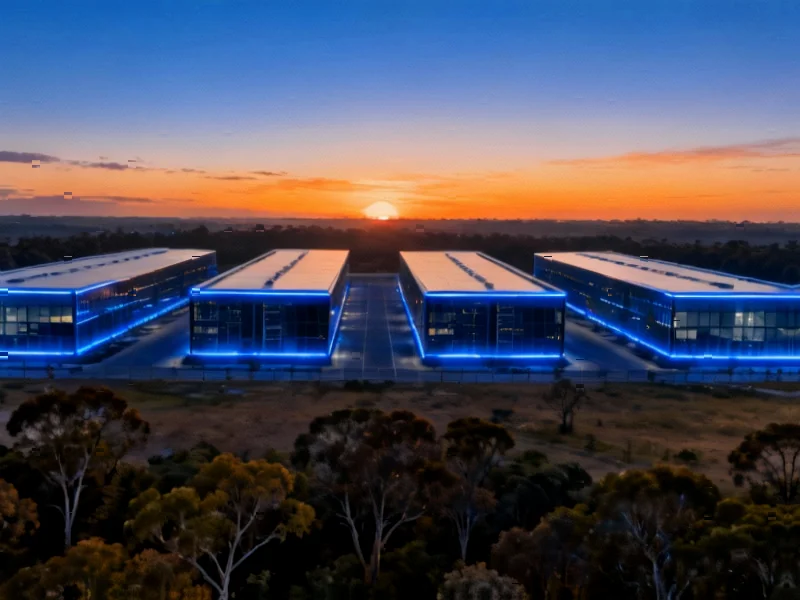According to Neowin, Microsoft has signed a $9.7 billion agreement with data-center operator IREN to secure access to NVIDIA’s advanced AI chips, addressing a critical computing capacity shortage that has limited Microsoft’s ability to fully capitalize on the AI boom. The deal involves Dell supplying $5.8 billion worth of NVIDIA’s GB300 chips and equipment to IREN for Microsoft’s use, with NVIDIA processors expected to deploy next year at IREN’s 750-megawatt Childress, Texas campus featuring new liquid-cooled data centers designed for 200 megawatts of IT capacity. Following the announcement, Dell shares rose 5% while IREN shares surged more than 20% in premarket trading, valuing IREN at $16.52 billion. Microsoft CFO Amy Hood indicated the company’s AI capacity constraints could persist until mid-2025, making this deal crucial for meeting demand for Copilot offerings. This massive infrastructure investment represents a strategic pivot in how tech giants are addressing the AI compute shortage.
The AI Infrastructure Arms Race Intensifies
Microsoft’s $9.7 billion commitment reveals the staggering capital requirements of staying competitive in the generative AI era. What’s particularly telling is that this represents just one piece of Microsoft’s broader AI infrastructure strategy—the company is simultaneously building its own data centers while making these third-party commitments. The fact that Microsoft is willing to prepay nearly $10 billion to a relatively new player like IREN speaks volumes about the severity of the compute shortage. This isn’t just about having enough chips; it’s about having them now, when AI adoption is exploding and market leadership is being determined in real-time. The alternative—building from scratch—would take years Microsoft simply doesn’t have in this hyper-competitive environment.
The Dependency Risks Behind the Deal
While the deal structure appears clever on the surface—Microsoft avoids massive capital expenditure while IREN handles the infrastructure build-out—it creates significant dependency risks. Microsoft is essentially betting its AI future on a company that, despite its impressive renewable energy portfolio and growing infrastructure footprint, remains a fraction of Microsoft’s size and experience. The termination clause for missed deadlines provides some protection, but switching providers mid-stream would be enormously disruptive. More concerning is the single-supplier risk with NVIDIA—if chip shortages worsen or next-generation delays occur, Microsoft’s entire AI roadmap could be jeopardized. This arrangement also creates potential margin compression, as Microsoft must pay IREN’s markup on top of NVIDIA’s already premium pricing.
The Fleeting Value of AI Hardware
Microsoft’s justification that this approach avoids “heavier capital spending on chips that quickly lose value” highlights a fundamental truth about AI hardware: today’s cutting-edge processors become tomorrow’s commodity. NVIDIA’s rapid iteration cycle means the GB300 chips Microsoft is paying billions for could be superseded within 12-18 months. However, this isn’t necessarily the bad deal it might appear. The computational requirements for training and inference are so massive that even “last-generation” hardware retains substantial value for specific workloads. Microsoft’s strategy seems to be about securing baseline capacity for established services while reserving its newest, self-built infrastructure for cutting-edge development. Still, the depreciation risk is real—if AI model efficiency improves faster than expected, Microsoft could find itself locked into expensive, underutilized capacity.
The New AI Infrastructure Economy
This deal signals the emergence of a new class of infrastructure intermediaries—companies like IREN that can secure power, build data centers, and manage the complex logistics of AI hardware deployment. We’re witnessing the professionalization of AI infrastructure as a service, where specialized operators can move faster than tech giants burdened by legacy processes and scale. The 20% stock surge for IREN reflects investor recognition that there’s massive value in being the arms dealer rather than the soldier in the AI wars. This could trigger a wave of similar deals as other cloud providers face the same constraints, potentially creating a new investment category focused purely on AI infrastructure plays. However, it also raises questions about whether we’re building an sustainable AI economy or simply recreating the dot-com infrastructure bubble with different technology.
Renewable Energy as Competitive Advantage
IREN’s entirely renewable-powered facilities represent a crucial strategic element often overlooked in AI discussions. As AI’s energy consumption becomes a growing concern for regulators and environmentally-conscious customers, Microsoft gains both computational capacity and ESG credibility through this partnership. The liquid-cooled data centers mentioned for the Texas deployment aren’t just technical details—they’re essential for managing the thermal demands of dense AI computing while maintaining efficiency. This deal demonstrates that in the AI era, computational capacity is increasingly tied to energy capacity, and companies that have secured renewable energy sources hold significant leverage. We’re likely to see more deals structured around energy availability rather than pure computational specs, fundamentally changing how tech companies approach infrastructure planning.




